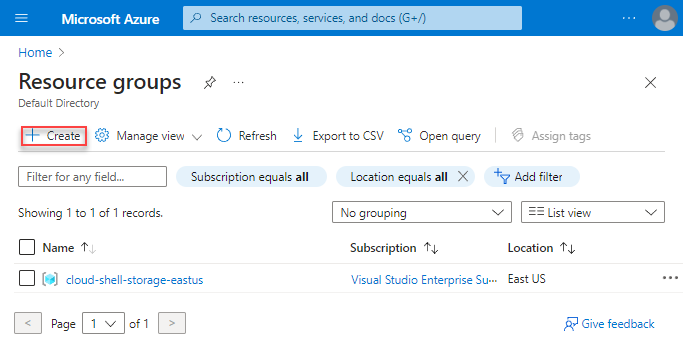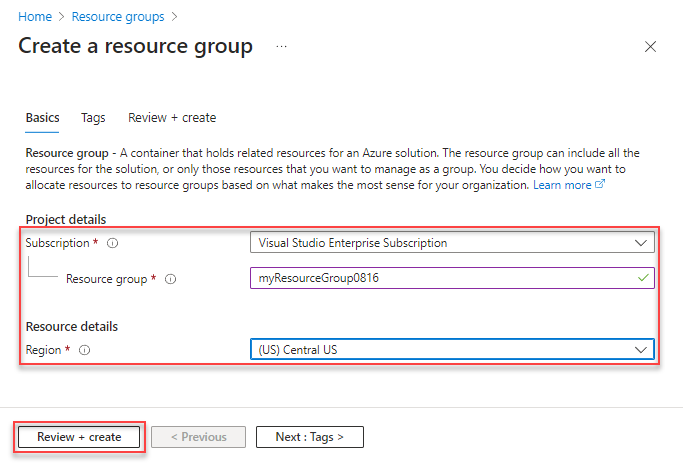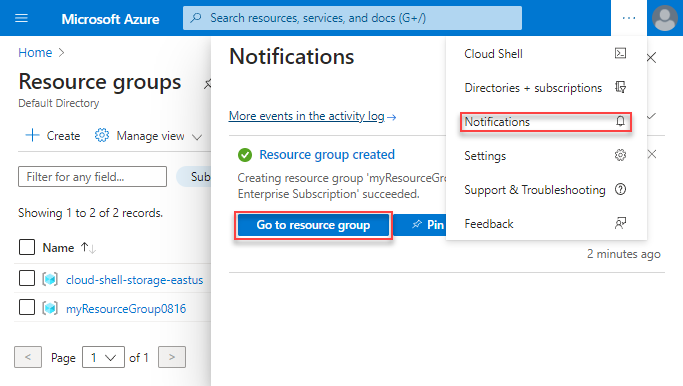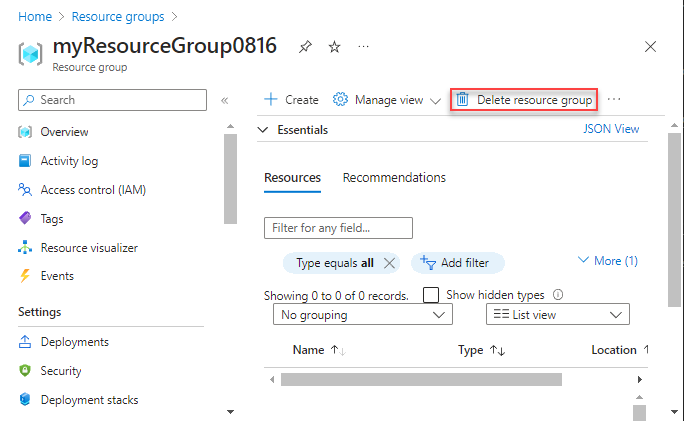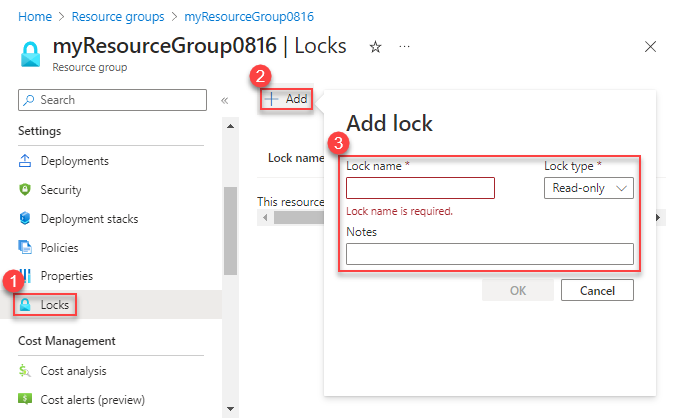Use the Azure portal and Azure Resource Manager to manage resource groups
Learn how to use the Azure portal with Azure Resource Manager to manage Azure resource groups.
Note
This article provides steps about how to delete personal data from the device or service and can be used to support your obligations under the GDPR. For general information about GDPR, see the GDPR section of the Microsoft Trust Center and the GDPR section of the Service Trust portal.
What is a resource group
A resource group is a container that holds related resources for an Azure solution. The resource group can include all the resources for the solution or only those resources that you want to manage as a group. You decide how to allocate resources to resource groups based on what makes the most sense for your organization. Generally, add resources sharing the same lifecycle to the same resource group so you can easily deploy, update, and delete them as a group.
The Azure portal uses the resource group scope to create views that span across multiple resources. For example:
- Metrics blade provides metrics information (CPU, resources) to users.
- Deployments blade shows the history of ARM template or Bicep deployments targeted to that resource group (which includes portal deployments).
- Policy blade provides information related to the policies enforced on the resource group.
- Diagnostics settings blade provides errors and warnings to review.
The resource group stores metadata about the resources. When you specify a location for the resource group, you're specifying where that metadata is stored. For compliance reasons, you might need to ensure that your data is stored in a particular region. Resources inside a resource group can be in different regions.
Create resource groups
Sign in to the Azure portal.
Select Resource groups.
Select Create.
Enter the following values:
Select Review + Create.
Select Create. It takes a few seconds to create a resource group.
To refresh the resource group list, select Refresh from the top menu. To open the newly created resource group, select it from the list. Or, select Notification (the bell icon) from the top, and then select Go to resource group to open the newly created resource group.
List resource groups
Sign in to the Azure portal.
To list the resource groups, select Resource groups.
To customize the information displayed for the resource groups, configure the filters. The following screenshot shows the other columns that you can add to the display:
Open resource groups
- Sign in to the Azure portal.
- Select Resource groups.
- Select the resource group you want to open.
Delete resource groups
Open the resource group you want to delete. See Open resource groups.
Select Delete resource group.
For more information about how Resource Manager arranges how resources are deleted, see Azure Resource Manager resource group and resource deletion.
Deploy resources to a resource group
After you create a Resource Manager template, use the Azure portal to deploy your Azure resources. For information about creating a template, see Quickstart: Create and deploy Azure Resource Manager templates by using the Azure portal. For information about using the portal to deploy a template, see Deploy resources with Resource Manager templates and Azure portal.
Move to another resource group or subscription
You can move resources from one resource group to another. For more information and guidance, see Move Azure resources to a new resource group or subscription.
Lock resource groups
Locking prevents other users in your organization from accidentally deleting or modifying critical resources like an Azure subscription, resource group, or resource.
Open the resource group that you want to lock. For more information, see Open resource groups.
In the left pane, select Locks.
To add a lock to the resource group, select Add.
Enter Lock name, Lock type, and Notes. The lock types include Read-only and Delete.
See Lock your resources to protect your infrastructure to learn more.
Tag resource groups
Apply tags to resource groups and resources to logically organize your assets. For more information, see Use tags to organize your Azure resources.
Export resource groups to templates
To learn about exporting templates, see Single and multi-resource export to template - Portal.
Manage access to resource groups
Use Azure role-based access control (Azure RBAC) to manage access to resources in Azure. For more information, see Assign Azure roles using the Azure portal.
Next steps
- To learn more about managing Azure resources, see Manage Azure resources by using the Azure portal.
- To learn more about Resource Manager, see the What is Azure Resource Manager? overview.
- To learn the Resource Manager template syntax, see Understand the structure and syntax of Azure Resource Manager templates.
- To learn how to develop templates, see the step-by-step Azure Resource Manager documentation tutorials.
- To view Azure Resource Manager template schemas, see Define resources with Bicep, ARM templates, and Terraform AzAPI provider.
